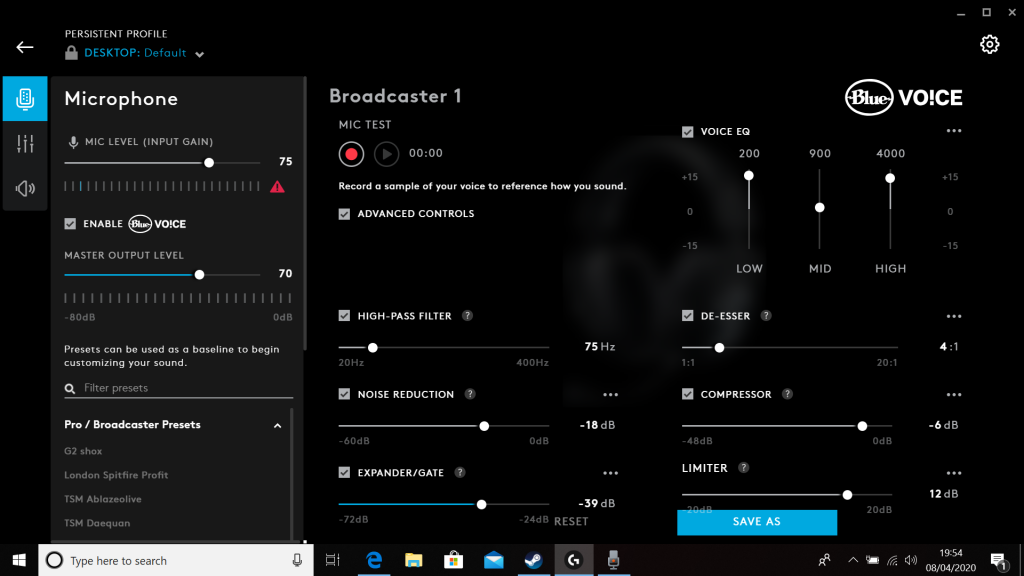

The bottom of the microphone has a headphone jack for playback, a microUSB port to power it, and a hole for a 5/8-inch thread to attach a boom arm to.

The symbol of each pattern is backed by an LED that lights up when that pattern is active. The mic features cardioid (good for streaming), bidirectional (good for a two-person podcast), omnidirectional (good for multi-person podcasts or conference calls) and stereo (good for musical instrumentals and Autonomous Sensory Meridian Response) polar patterns. On the opposite side of the microphone you'll find a button to switch the polar pattern. With the Blackout Noir Yeti X sitting on my desk, I felt like Batman side hustling it as a Twitch streamer. The knob controls the gain, but if you hold it down for two seconds, it switches to headphone volume control, and holding it for another two seconds switches it to the controls for balance of headphone and microphone audio. Once this baby booted up, an LED light on the knob lit up green and the 11 dots around it began measuring the meter of my voice.


 0 kommentar(er)
0 kommentar(er)
